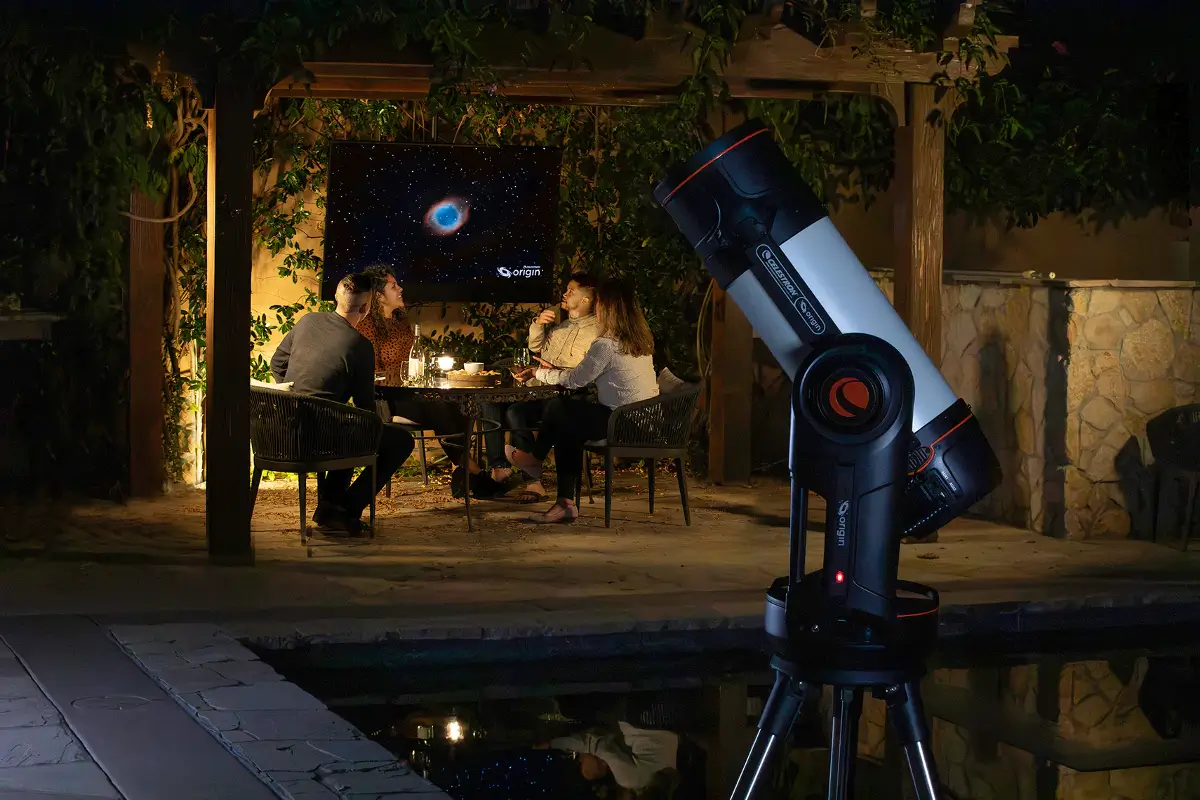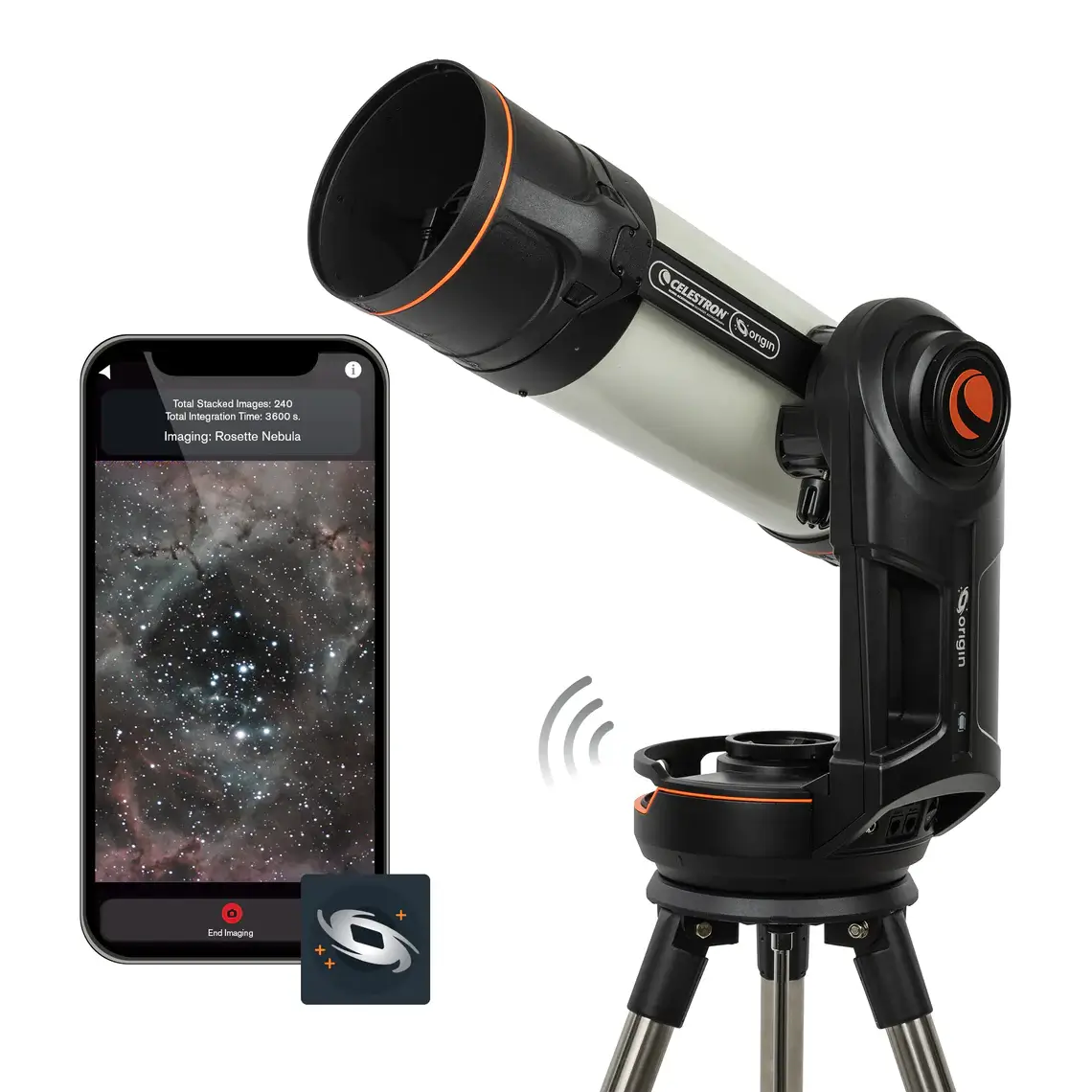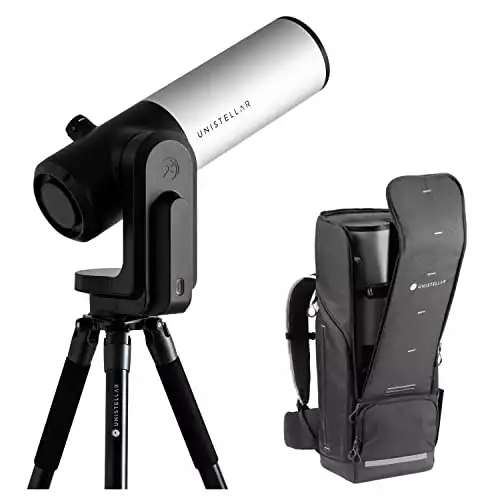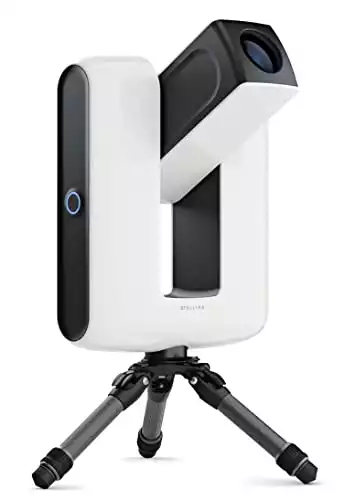In January 2024, Celestron announced the Celestron Origin to be released in April 2024.
This is Celestron’s first venture into the world of smart telescopes. But what is the Celestron Origin and how does it compare with the existing smart telescopes on the market?
In this article, we compare the Celestron Origin vs Stellina & eVscope 2 to see how it shapes us against the other premium smart telescope options.
Key Points
- The Celestron Origin is a premium smart telescope at a premium price ($3,999)
- It is a 6-inch RASA telescope combined with a 6.4 MP Sony IMX178 camera and single fork-arm alt-azimuth mount
- It is better in terms of key specifications than any other smart telescope, particularly the 6-inch aperture and proven imaging performance of the RASA
- The only downside is the weight at more than 40 lbs. This is significantly heavier than any other smart telescope
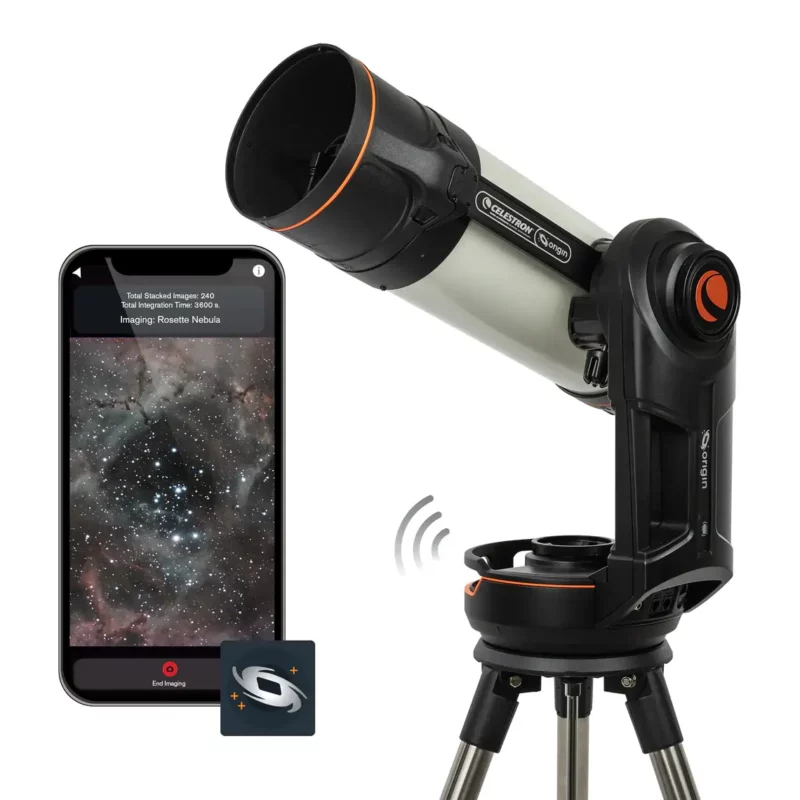
What is the Celestron Origin?
The Celestron Origin is a smart telescope.
It’s official name is the Celestron Origin Intelligent Home Observatory – just like Vaonis call the Stellina and Vespera Observation Stations – but these are all smart telescopes.
The key commonalities are:
- They are all-in-one packages with a camera and telescope together, as well as mount and any necessary accessories. They are pretty much good to go out of the box and require no previous knowledge or experience.
- They are operated via app on your smartphone or tablet.
- They scan the night sky for you, ask you what you want to see, go to it, photograph it, and send the processed image straight to your phone.
In short, they are very convenient astrophotography telescopes that are perfect for those without the time or inclination to acquire all the separate pieces of equipment and learn how to take astronomy photos with them.
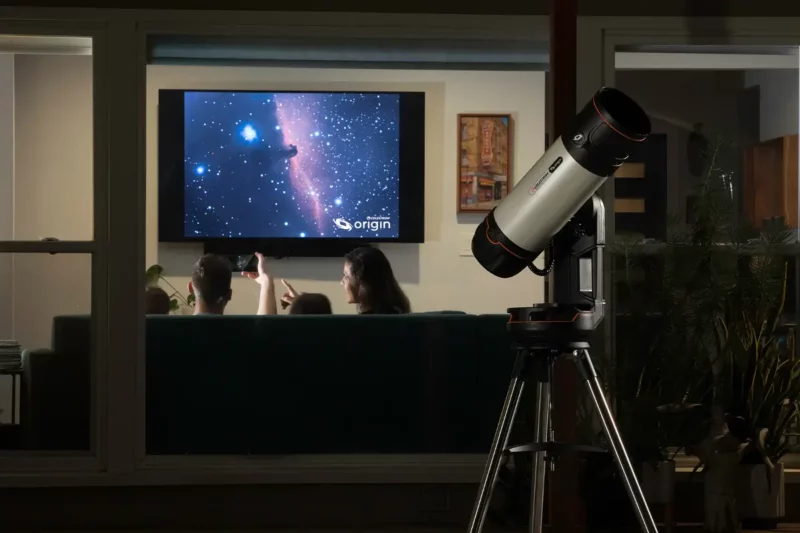
In addition, it allows you to do observational astronomy and bypass the problem of light pollution by showing a better image of any astronomical object than you could expect to see with your eyes through a regular telescope.
It does this by building the image over a longer period of time. This is what is know as Electronically Assisted Astronony (EAA) and is gaining in popularity as light pollution increases each year.
Here is a video that gives you a good overview of the Celestron Origin:
Why Are Celestron Releasing a Smart Telescope?
This is a big development in the astronomy/astrophotography world as Celestron have been the most popular and successful retailer of consumer telescopes in recent years/decades but were in danger of falling behind as smart telescopes emerged.
This phenomenon began in 2019 when two French companies, Vaonis and Unistellar, released the Stellina and eVscope, respectively.
In the years since then, these companies have upgraded their models but they were always pretty expensive and a luxury item. The tech inside was good, but not great in terms of the telescope specifications but the usability was seemless.
Then in 2023 two new budget models emerged as ZWO entered the fray with the SeeStar S50, and Dwarflab with the Dwarf II. These were both available for around much less and have really shaken things up.
Celestron then was in danger of getting left behind as it had great telescopes, but no smart telescopes. With the Origin, this has changed and we potentially have a contender for the best smart telescope out there.
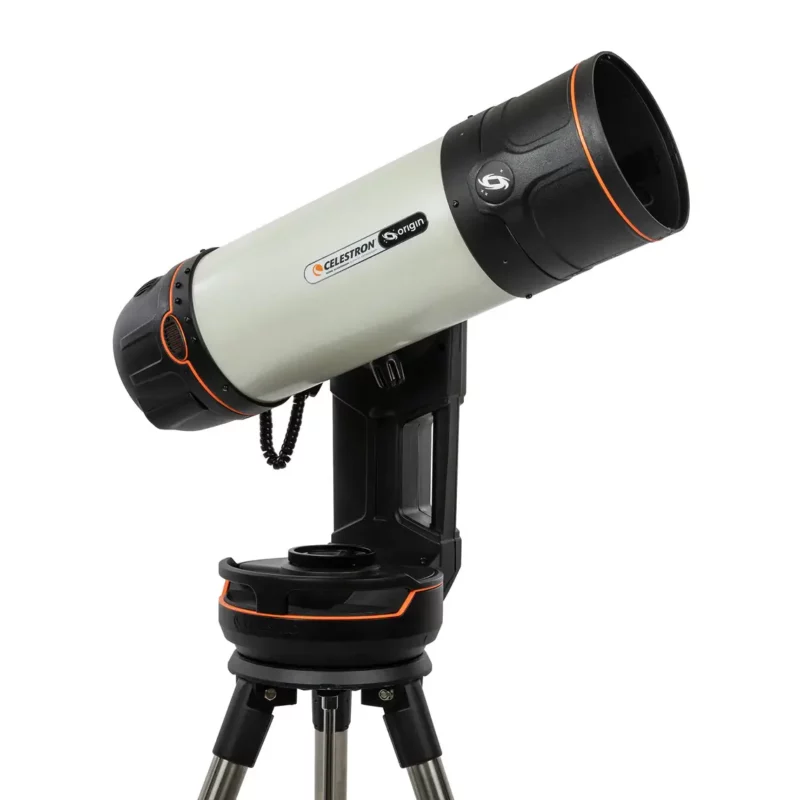
Celestron Origin Specifications
The key Celestron Origin specifications for the telescope are:
- Telescope Type: Rowe-Ackermann Schmidt Astrograph (RASA)
- Aperture: 6-inch / 152mm
- Focal Length: 335mm
- Focal Ratio: f/2.2
One of the most exciting things about the Celestron Origin is that the telescope (OTA) is a 6-inch aperture Rowe-Ackermann Schmidt Astrograph (RASA).
These RASAs are high-end astrophotography telescopes that have been being used successfully by some of the best astrophotographers in the world in the past few years.
They are a variation of the Celestron Schmidt-Cassegrain telescopes (SCT) but more suited to deep sky imaging as they have a wider field of view stemming from a shorter focal length.
In comparison,SCTs have a longer focal length which makes them the best telescopes for planetary imaging where a narrower field of view is beneficial.
The specs for the integrated camera are:
- Sensor: Sony IMX178
- Sensor Size: 8.92mm diagonal
- Pixel Size: 2.4μm x 2.4μm
- Resolution: 6.4 MP (3096 x 2080)
- Field of View: 1.27° x 0.85°
This camera has the same sensor as the popular ZWO ASI178 dedicated astronomy camera.
- The mount is a single fork-arm alt-azimuth mount that is used on the Celestron Nexstar Evolution telescope range
- The total weight is 41.6 lbs (18.9 kg).
You can see the full specifications on Celestron’s website here.
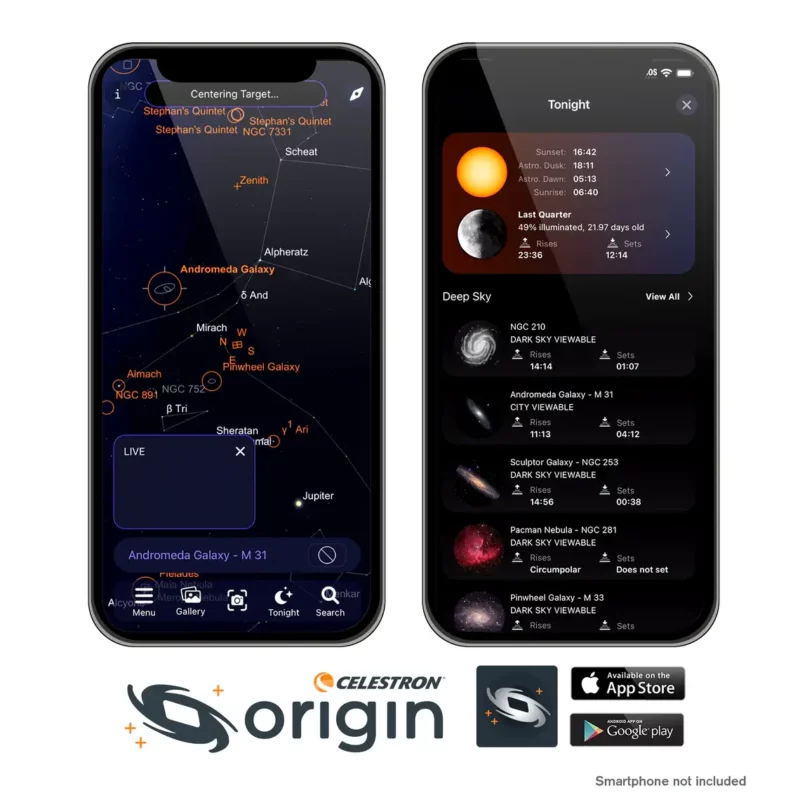
Celestron Origin Vs Stellina and eVscope
So how does the Celestron Origin compare to the other premium smart telescopes, namely the Vaonis Stellina and Unistellar eVscope 2?
Here is a chart to compare the key specifications:
|
Aperture:
152 mm (6 inch)
|
Aperture:
114 mm (4.5 inch)
|
Aperture:
80 mm (3.1 inch)
|
|
Focal Length:
335 mm
|
Focal Length:
450 mm
|
Focal Length:
400 mm
|
|
Focal Ratio:
f/2.2
|
Focal Ratio:
f/3.9
|
Focal Ratio:
f/4
|
|
Camera resolution:
6.4 MP
|
Camera resolution:
7.7 MP
|
Camera resolution:
6.4 MP
|
|
Pixel Size:
2.4μm
|
Pixel Size:
2.9μm
|
Pixel Size:
2.4μm
|
|
Sensor:
Sony IMX178
|
Sensor:
Sony IMX347
|
Sensor:
Sony IMX178
|
|
Weight:
41.6 lbs (18.9 kg)
|
Weight:
19.8 lbs (9 kg)
|
Weight:
24.7 lbs (11.2 kg)
|
|
$3,999.00
|
$5,199.00
|
$2,377.00
|
Now let’s look at these key elements in turn.
Aperture
- Celestron Origin: 152 mm (6 inch)
- Vaonis Stellina: 80 mm (4.5 inch)
- Unistellar eVscope 2: 114 mm (3.1 inch)
In terms of aperture, the Celestron Origin is a clear notch above the competitors. 6-inches is a significant upgrade over any other smart telescope.
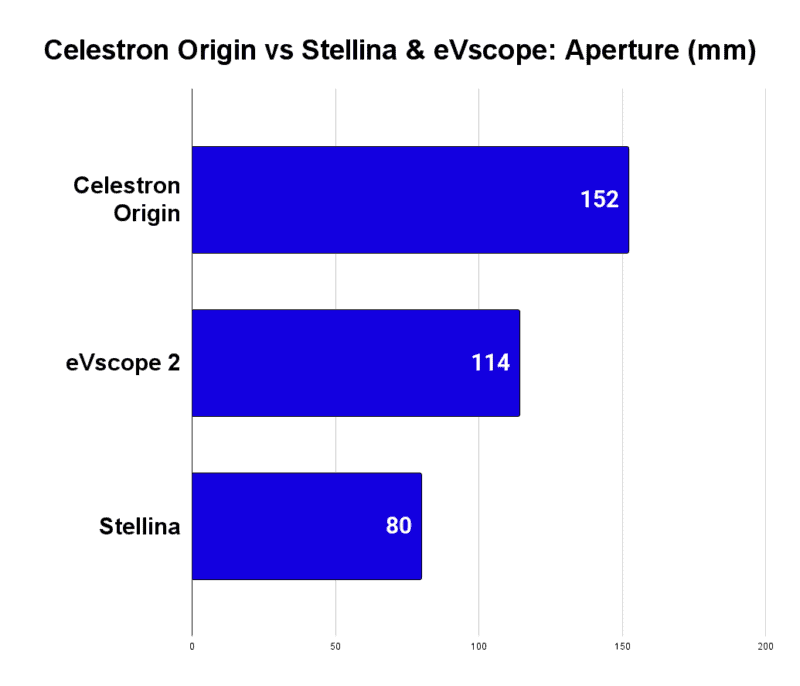
Focal Length
- Celestron Origin: 335 mm
- Vaonis Stellina: 400 mm
- Unistellar eVscope 2: 450 mm
The Celestron Origin has the shortest focal length and the widest field of view.
Focal Ratio
- Celestron Origin: f/2.2
- Vaonis Stellina: f/4
- Unistellar eVscope 2: f/3.9
In terms of focal ratio, the Origin is again a clear winner. The lower the f-number the faster it is able to capture light and produce images.
Weight
- Celestron Origin: 41.6 lbs
- Vaonis Stellina: 24.7 lbs
- Unistellar eVscope 2: 19.8 lbs
With regards to weight, the Origin definitely suffers compared to the other models which are much lighter and more portable. At more than 40 lbs it is pretty much double its competitors.
Camera Resolution
- Celestron Origin: 6.4 MP
- Vaonis Stellina: 6.4 MP
- Unistellar eVscope 2: 7.7 MP
The eVscope 2 is the winner here with the highest megapixel camera. The Stellina and Origin have the same camera inside.
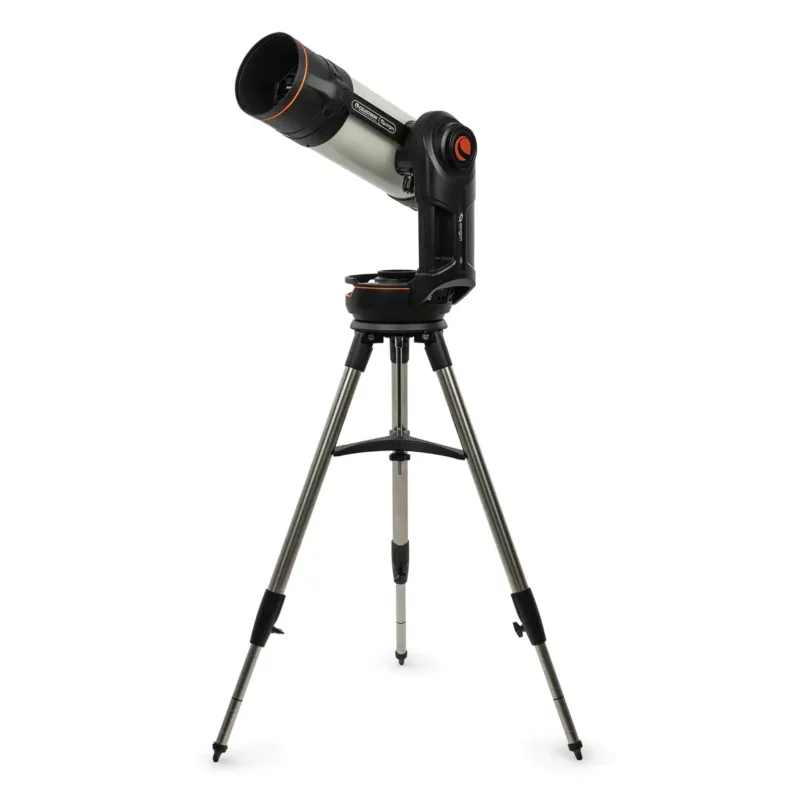
How Much Does the Celestron Origin Cost?
The Celestron Orgin costs $3,999. This may vary over time and Celestron often offer seasonal deals on their products.
You can check this price and preorder it now at these retailers:
This is obviously pretty expensive for most people but means it will be competing with the premium models like the Unistellar eVscope 2 and Vaonis Stellina that are in a similar price bracket, rather than the more budget Vespera, SeeStar or Dwarf 2.
When is the Celestron Origin Released?
It available for pre-order now and is expected to start shipping in April 2024.
Celestron Origin Images
Here are some images taken by Lance Lucero with the Origin that Celestron released:
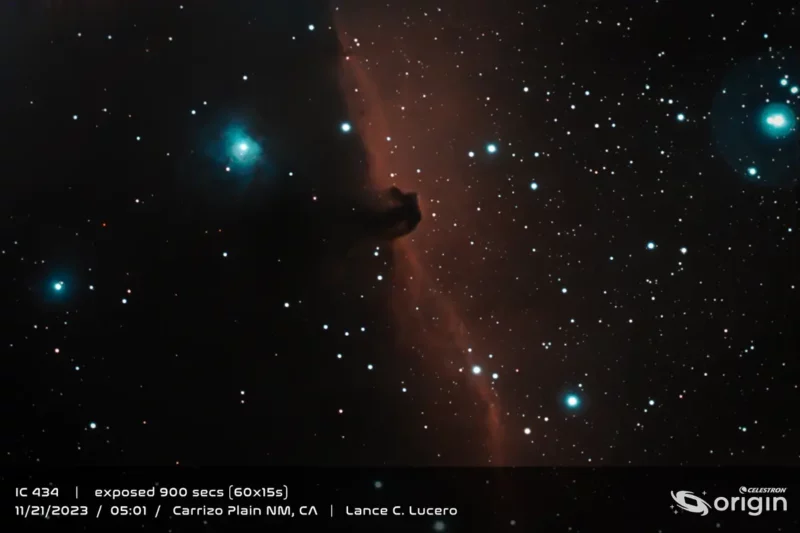
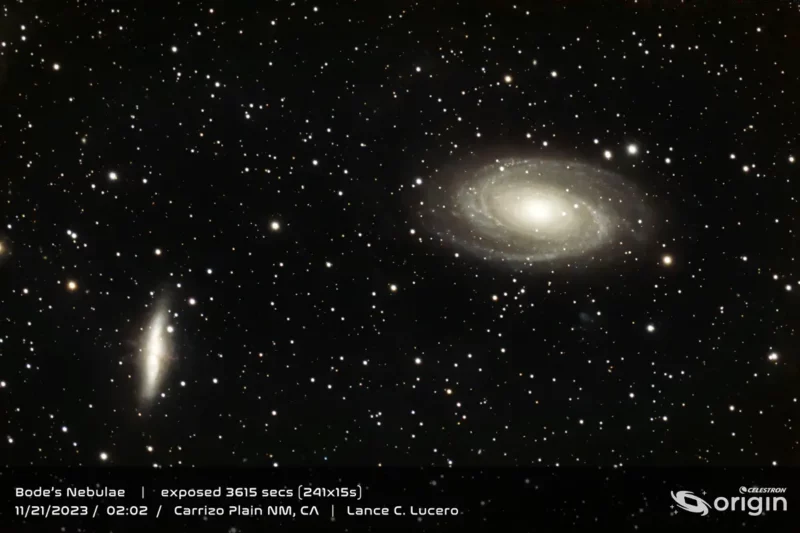
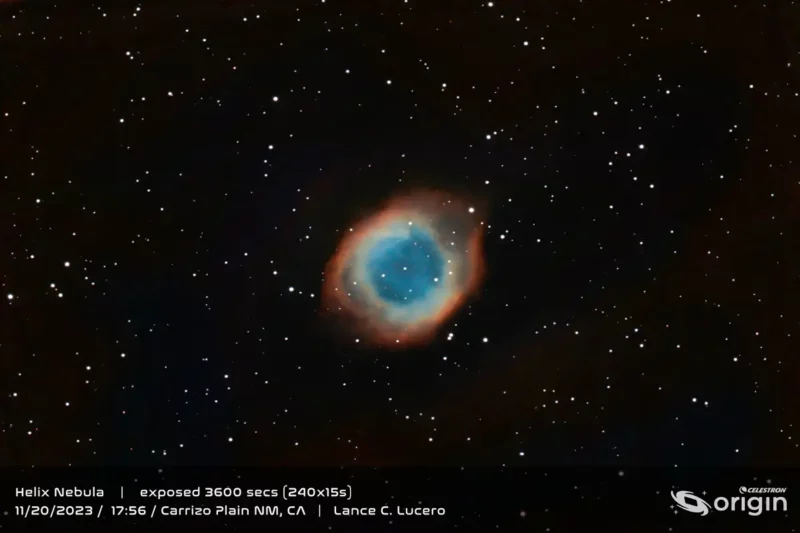
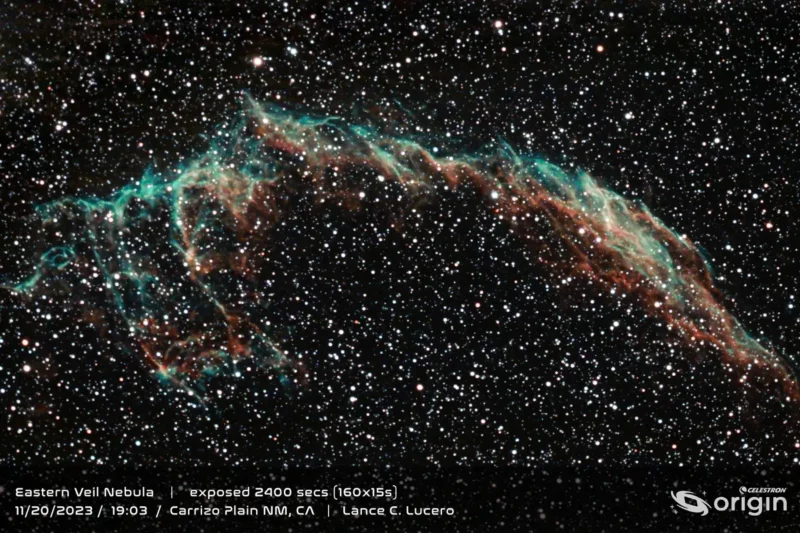
We only have these promotional images for now.
Verdict: Celestron Origin vs eVscope & Stellina
The Celestron Origin is Celestron doing what it has done quite well in recent years – repurposing existing and excellent telescopes that are tried and tested but combining them with new technology.
See the StarSense Explorer range for another example where the actual telescopes were not new but additional features and tech brought them up to the modern smartphone age.
The Celestron Origin is a premium smart telescope at a premium price but it has the potential to take the crown of the best smart telescope on the market.
It has the credentials in terms of the specs. This is a real astrophotography telescope and seems like a step in the direction of offering smart telescope setups that can genuinely compete with advanced astrophotography setups for imaging but without a lot of the work involved.
The only real significant downside versus its competitors the eVscope 2 and Stellina is the weight. It weighs roughly twice as much and so is much less portable.
In addition, a lot will come down to usability. This is what Vaonis and Unistellar have done well – slick, out-of-the-box experiences like you get with buying Apple products.
Brand new smart telescope from Celestron in 2024
- Large 6-inch aperture RASA astrophotography telescope
- Fast f/2.2 focal ratio
- 6.4 MP camera
- All-in-one package that takes astrophotography images for you at the press of a button from your smartphone
- Expensive
- Weighs over 40 lbs
Sources and further information:
- Celestron Origin Technology
- Celestron Origin Specification Sheet
- Skies & Scopes Guide to the Best Smart Telescopes
- Skies & Scopes Guide to the Best Telescopes for Astrophotography


